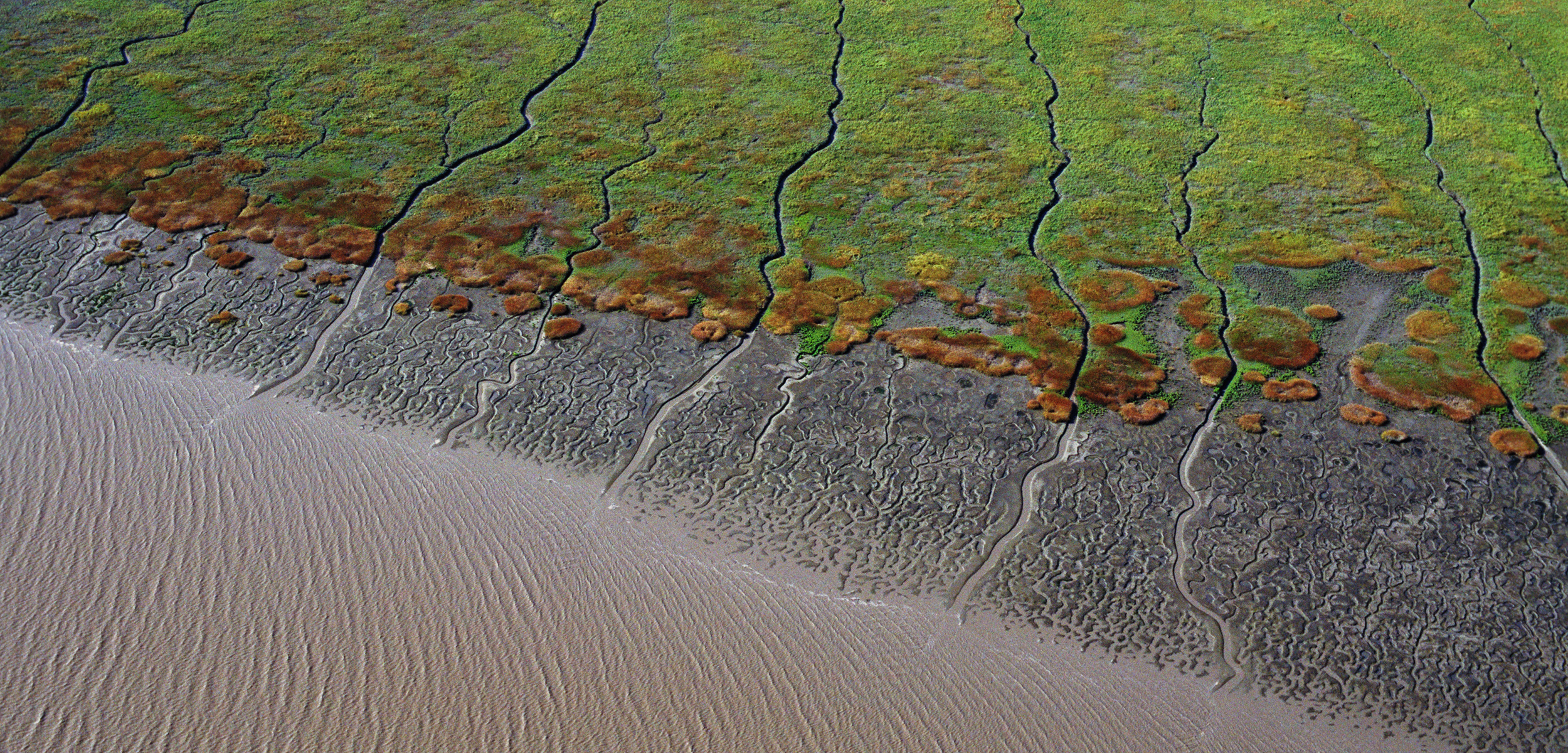Making a Marsh out of a Mud Pile
In San Francisco Bay, scientists are looking for a better way to rebuild flagging marshland.
Article body copy
The water in California’s San Francisco Bay could rise more than two meters by the year 2100. For the region’s tidal marshes and their inhabitants, such as the endangered Ridgway’s rail and the salt marsh harvest mouse, it’s a potential death sentence.
Given enough time, space, and sediment, tidal marshes can build layers of mud and decaying vegetation to keep up with rising seas. Unfortunately, upstream dams and a long history of dredging bays and dumping the sediment offshore are starving many tidal marshes around the world of the sediment they need to grow.
To keep its marshes above water, San Francisco Bay needs more than 545 million tonnes of dirt by 2100. Yet for restorationists looking to rebuild marshes lost to development and fortify those that remain, getting enough sediment is just one hurdle: the next challenge is figuring out a way to deliver it without smothering the very ecosystem they’re trying to protect.
To really understand the problem, one need only look at Louisiana. Facing the potential loss of nearly all its wetlands by 2070, the state’s Coastal Protection and Restoration Authority and the US Environmental Protection Agency have dredged the Mississippi River and pumped the slurry onto a rapidly drowning marsh along Bayou Dupont, south of New Orleans.
This approach builds up terrain quickly, but it also buries the marsh’s plants and animals in a thick coating of muck. Firehosing sediment into the marsh also destroys the ecosystem’s natural complexity, filling in the small variations in elevation that allow different plants to flourish and smoothing over the natural bumps and ridges that absorb excess energy from waves or storms.
That’s why, in San Francisco Bay, the US Army Corps of Engineers (USACE) and its multiple partners have embarked on a pilot project to test what they hope is a less overwhelming approach to marsh restoration. In a method called shallow placement, the corps dropped sediment onto the bay floor, then let the tides do the work of moving it around.
For 26 days in December 2023, USACE took sediment dredged up as part of routine work to maintain ship access in San Francisco Bay and deposited almost 70,000 cubic meters of it near the Eden Landing Ecological Reserve. Located on the east side of San Francisco Bay, between Oakland and San Jose, this site hosts a series of industrial salt ponds in various stages of being transformed back into wetlands.
To track how much of this sediment actually makes it from the seafloor to the marsh, USACE and scientists from the US Geological Survey mixed magnetic, florescent tracers the size of sand grains into the sediment. By hanging magnets in the water and taking samples from the marsh, researchers are hunting down these tracers. The work is giving them a sense of where—and how quickly—the sediment is moving around. They’re also monitoring the seabed to study the effect the dumping has on seafloor life.
The goal, says Julie Beagle, the environmental planning section chief for the USACE San Francisco District, is to increase the vertical growth of the marsh from its current rate of one to two millimeters a year to a few centimeters per year. Any more, says Beagle, would “drown out vegetation and change the composition of the marsh.”
If the project is successful, Beagle says this technique could be particularly valuable for a place like Arrowhead Marsh off Oakland, which has the highest population of endangered Ridgway’s rails in the San Francisco Bay Area.
This softer approach to ecosystem transformation might seem anathema to USACE, which tends to approach problems with a lot of massive water-controlling infrastructure like its infamous levees. But Beagle, who says she “came to the corps to be a cultural changemaker,” helms the agency’s Engineering with Nature initiative for her district, helping her colleagues work with nature rather than always trying to control it.
USACE’s San Francisco Bay experiment builds on similar tests—also aimed at delivering sediment more naturally—previously conducted in other parts of the world. One such project in Indonesia, for instance, led by Dutch research organization EcoShape, used small wooden dams to ensnare naturally suspended sediment and allow a degraded mangrove forest to recover.
But another of EcoShape’s projects—the Netherlands’ Mud Motor—shows just how tricky these efforts can be. The Mud Motor is a project implemented on the Wadden Sea coast to fortify a nearby salt marsh. The project worked for a time, adding two centimeters of elevation to the marsh. Eventually, however, water washed most of this new sediment away again, says Henk Nieboer, a civil engineer and the former director of EcoShape. “The area was too dynamic,” he says. “The sediments didn’t settle.”
Researchers expect that is less likely to happen in San Francisco Bay because it’s protected, but the point stands: the quest to control nature is elusive. And maybe that’s okay.
With the sediment-tracking study underway through the end of the year, Beagle says the knowledge USACE and its partners gain will be useful when it comes to guiding future projects in San Francisco Bay.
Engineers may not be able to make all the sediment go exactly where they want when they want it; some of it may swirl around the bay for a while, lingering on mudflats before possibly fortifying marshes in the coming months or years, says Beagle. But because officials in San Francisco Bay spent decades dredging sediment from the bay and dumping it out at sea, Beagle says changing tack to reuse material within the bay will almost certainly be a better move.

